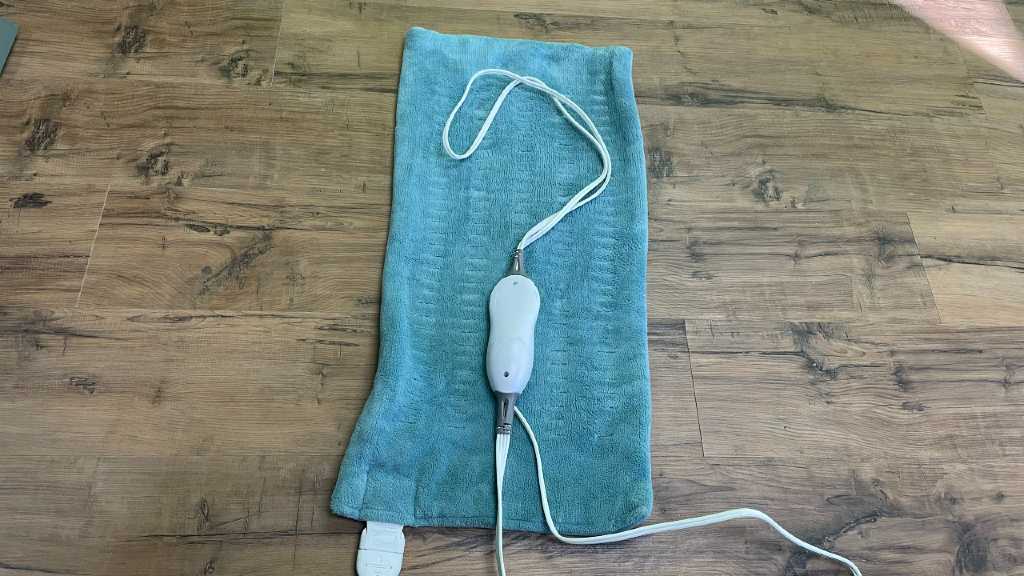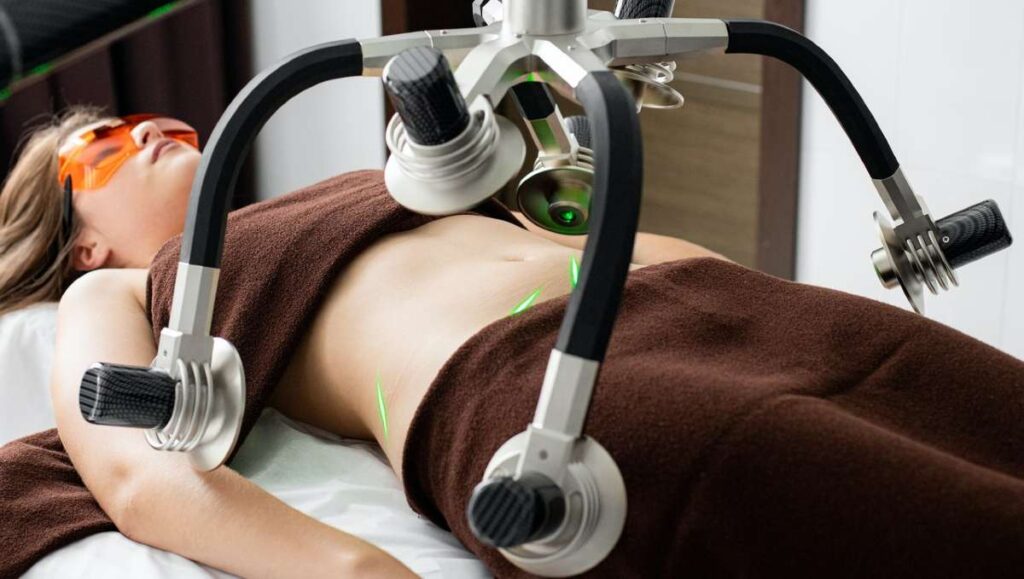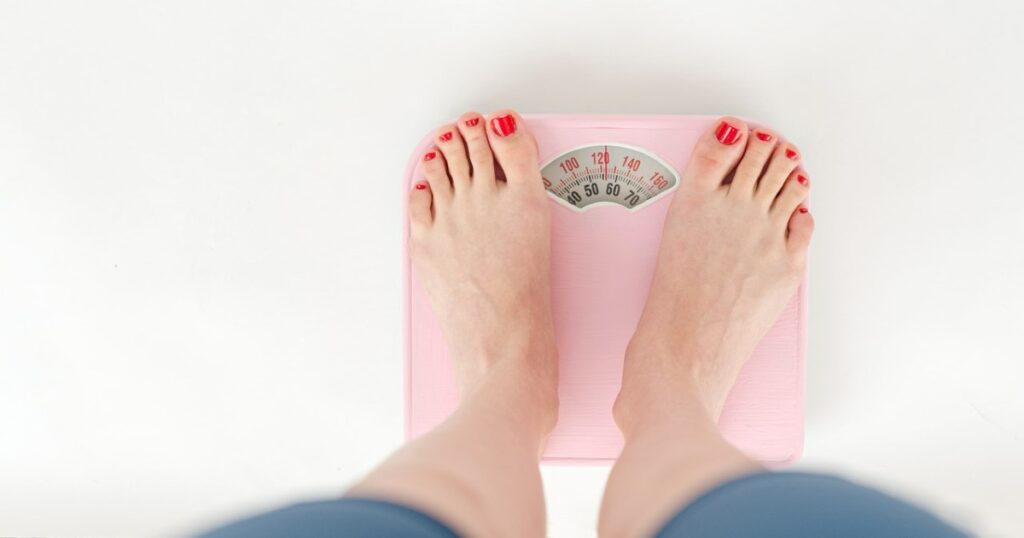
Since a lot of people are struggling to lose belly fat, there’s been a buzz about heating pads and their supposed ability to burn fat. Even some news articles have claimed that using a hot pad or hot water bag on stubborn fat will melt it away.
Heating pad for weight loss are often marketed as beneficial, but their effectiveness is debatable, and they might simply be another fad-like buzz topic.
Can You Lose Weight With a Heating Pad for Weight Loss?
Dermatologists and cosmetic doctors offer heating devices that supposedly shrink fat, leading to the suggestion of using heating pads for weight loss.
Unfortunately, heating pads do not penetrate the skin or target fat cells and scientists have found that applying heat to the midsection of healthy people doesn’t change their overall weight.
So most claims that heat can affect belly fat are simply not true.1 While heating pads can eliminate tension and soothe pain, they do not aid in weight loss. However, other heat treatments are arising and are slightly more promising.2
Do Other Heat Treatments “Melt” Fat or Shed Pounds?
There are many in-office heat treatments that claim to help people melt belly fat. RF, LLLT, and HIFU (explained below) do show statistical effects on body contouring – about a 2-4 cm circumference reduction. However, due to the lack of existing evidence, comparing the techniques is difficult.3

- Radiofrequency-Induced Technology (Vanquish)
Dermatologists say that radiofrequency devices can send heat through the skin, deeply into the fat cells. Because fat cells are more temperature-sensitive than skin cells, the RF energy can destroy the fat cells without harming the skin.4 The American Academy of Dermatology even states that radiofrequency devices like Vanquish will help melt fat, especially around the midsection.5 Radiofrequency is mainly used for cosmetic purposes, like subtle body contouring, and not for losing extra pounds.
- Low-Level Laser Therapy (LLLT)
LLLT is used to treat pain and reduce swelling in instances like golfer’s elbow, stress fractures, and plantar fasciitis, but it is also being used for weight loss. It is similar to red light therapy. In LLLT, the red-light heats all of the cells to a high temperature, which causes the fat cells to open up and dump their content.
This laser therapy seems to liquefy fat, so some plastic surgeons use this method before performing liposuction. As long as the patient does not refill the cell with sugars and starches, LLLT may help destroy fat cells. While LLLT has a long history and strong basic science in terms of pain management, it has not been well-studied for fat loss.6
- High-Intensity Focused Ultrasound (HIFU)
High-intensity ultrasounds have been used for half a century to treat tumors, but some doctors are using them to destroy fat tissue. The ultrasound causes tiny vibrations (on a molecular level), and those vibrations heat up the surrounding tissue. The idea is that the fat cells become so hot that they die.
Research shows that HIFU may reduce abdominal circumference by about 2 cm.7 Some experts are using it to treat love handles, arm fat, belly fat, and sagging skin.
- Heat-Generating Cells
A 2012 study by Ohio State University discovered a new fat-heating technology. In the study, when mice were injected in the abdomen with capsules that contained heat-generating cells, the mice lost 20% of their body fat after 80 days.
It appears that heat-generating cells kill bad fat cells and replace them with brown fat cells, which generate heat and speed up overall fat burning.8 This type of injection has not yet been used on humans, but it is a promising way to harness heat to burn fat – much better than using heating pads for weight loss.
- Plastic or Saran Wrap
The idea is that plastic wrap generates excess heat around the belly, helping to melt fat but this is simply a myth. Alternatively, some people think saunas are good for losing belly fat, but it seems that both plastic wrap and saunas only serve to spur sweating, resulting in a slight loss in water weight.9
The Best Ways To Lose Weight

If you are tired of the gimmicks. It’s important to stick to the 3 best ways to lose weight: proper nutrition, regular movement, and pure determination.
Eat Better or Diet: Someone can lose weight on a diet they love, or they can say goodbye to diets and instill more basic healthy practices. For example:
- Replace just one serving of carbs with one serving of vegetables each day
- Cut out 1-2 sources of sugar (check for sugar in sauces, yogurts, breads, etc.)
- Eat more whole foods – substitute those processed potato chips with apple slices
It appears that making just a little more effort to eat whole foods can result in long-term weight loss.
Exercise or Move More: The key is finding ENJOYABLE exercises & stretches, but if Zumba classes or swimming laps aren’t appealing, try moving just a little more!
- Fidget more
- Stand more
- Walk instead of drive
- Walk while talking on the phone
- Try basic yoga or Tai Chi
Any movement is great for the body and will lead to weight loss!
Don’t Give Up: Everyone makes mistakes, but no one can fail until they give up. Create a vision board, improve your environment, or join a weight loss group.
Don’t rely on any miracle overnight methods to get an hourglass figure – the tried-and-true methods are the ONLY ways to lose significant weight.
Losing Weight the Right Way
It can be tempting to try a heating pads for weight loss or even wonder if ice packs can reduce belly fat. But unfortunately, heating pads are just not effective for weight loss. Targeted heating treatments like HIFU may help with body sculpting, but they won’t result in significant weight loss. For now, stick to the basics – eating a little better and moving a little more can make all the difference.
References
1Porcari, J. P., McLean, K. P., Foster, C., Kernozek, T., Crenshaw, B., & Swenson, C. (2002). Effects of Electrical Muscle Stimulation on Body Composition, Muscle Strength, and Physical Appearance. The Journal of Strength and Conditioning Research, 16(2), 165. <https://pubmed.ncbi.nlm.nih.gov/11991766/>
2Shephard, R. (2007). Addition of aerobic exercise to dietary weight loss preferentially reduces abdominal adipocyte size. Yearbook of Sports Medicine, 2007, 226–227. <https://doi.org/10.1016/s0162-0908(08)70182-x>
3Alizadeh, Z., Halabchi, F., Mazaheri, R., Abolhasani, M., & Tabesh, M. (2016). Review of the Mechanisms and Effects of Noninvasive Body Contouring Devices on Cellulite and Subcutaneous Fat. International Journal of Endocrinology and Metabolism, 14(4). <https://doi.org/10.5812/ijem.36727>
4Pumprla, J., Howorka, K., Kolackova, Z., & Sovova, E. (2015). Non-contact radiofrequency-induced reduction of subcutaneous abdominal fat correlates with initial cardiovascular autonomic balance and fat tissue hormones: safety analysis. F1000Research, 4, 49. <https://doi.org/10.12688/f1000research.5708.1>
5Harvard Health. (2019, June 25). Abdominal fat and what to do about it. <https://www.health.harvard.edu/staying-healthy/abdominal-fat-and-what-to-do-about-it>
6B Cotler, H. (2015). The Use of Low Level Laser Therapy (LLLT) For Musculoskeletal Pain. MOJ Orthopedics & Rheumatology, 2(5). <https://doi.org/10.15406/mojor.2015.02.00068>
7Saedi, N., & Kaminer, M. (2013). New waves for fat reduction: high-intensity focused ultrasound. Seminars in cutaneous medicine and surgery, 32(1), 26–30. <https://pubmed.ncbi.nlm.nih.gov/24049926/>
8Ohio State University. (2012, September 5). Study in mice discovers injection of heat-generating cells reduces belly fat. ScienceDaily. Retrieved January 23, 2022 from <http://www.sciencedaily.com/releases/2012/09/120905135346.htm>
9Harvard Health. (2020, May 14). Sauna Health Benefits: Are saunas healthy or harmful? Retrieved January 25, 2022, from <https://www.health.harvard.edu/staying-healthy/abdominal-fat-and-what-to-do-about-it>